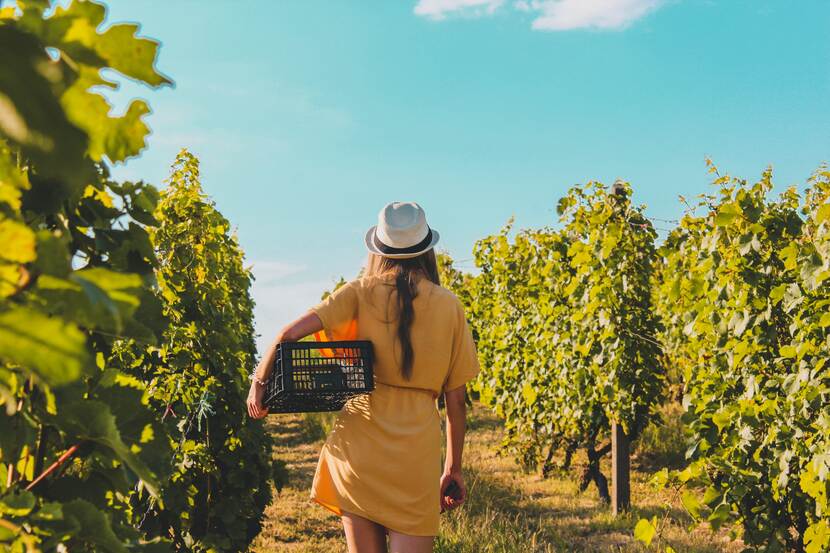Hungary: €184 million in subsidies for wine production and fruit farming
New subsidy for horticulture announced for 2024; agricultural machinery sales declined; changing trends in the brewing industry; honey producers call for help - Our weekly briefing on agriculture, food and nature news in Hungary.

€184 million in subsidies for wine production and horticulture until 2024
The agriculture news portal Agrárágazat.hu has reported this week that the Ministry of Agriculture has announced subsidies worth €184.1 million to be available for horticultural fruit farming and viticulture until the end of 2024. This will be available for 7 thousand farming companies, with fruit orchards and vineyards covering 65 thousand hectares. State Secretary Zsolt Feldman of the Ministry of Agriculture has stated that the goal is to push back imports and to reduce the negative effects of climate change on the industry. The portal also highlights that the government is cooperating with fifty producers’ collectives, which put together, annually produce goods worth €237.7 million.
Agriculture machine sales declined
A new sectoral overview by the Institute of Agricultural Economics (AKI) has shown that between January and September, 2023, individual farms and corporate enterprises in Hungary purchased new agricultural machinery and equipment worth €596.3 million, which shows a 16% y-o-y decline. However, farmers have spent in total €177.7 million on machine parts, which is an increase of 7% y-o-y.
The report by AKI also highlights that out of all agricultural machinery sales to end-users between Q1-Q3, 2023, 75% were handled by ten distributor organizations. 59% of the sales has been concentrated in the hands of the three largest machinery dealers.
Agricultural producers allocated 58% of the total value of their agricultural machinery investments to the acquisition of power machinery between Q1-Q3, 2023. Within the total sales, tractors accounted for a 31% share among prime movers, while combine harvesters represented a 15% share.
Beekeepers: Abysmal producer prices destroy profits
Agrárszektor.hu reports that beekeepers in Hungary are forced to sell their produce at half of the production cost, and an awareness program for the conservation of pollinators named “Bee the solution” commented that the industry needs strict, EU-level controls due to the prevalence of cheap counterfeit honey flooding the market. Otherwise, “the domestic sector, which currently provides a livelihood for more than twenty thousand families, could soon be reduced to hobbyist beekeeping,” adds the organization. The news portal also highlights that sales are becoming harder and harder for domestic beekeepers as “there is a massive oversupply throughout the EU, primarily due to the influx of low-quality honey, often based on sugar syrup, arriving from China, Turkey, and Ukraine at dumping prices.”
The overview by Agrárszektor.hu shows that apiculture in Hungary has seen a medium year. The average yield of canola honey was 10-20 kg per beehive, while the yield was 20-25 kg per beehive for acacia honey. Beekeepers are generally hopeful for the spring, however, the situation has been made more complicated by the weather. During the long and warm fall, bees have consumed a lot of food, which means that on average, they will have to leave 1.8 tons of honey for every one hundred beehives so that the insects can overwinter safely.
Changing trends in the brewing industry
In an interview by the portal Trademagazin.hu, Sándor Kántor, head of the Hungarian Brewers’ Alliance, has stated that the sales figures of the five largest brewing companies in Hungary have decreased by 12% y-o-y. Data provided by Heineken Hungary, Borsodi, Carlsberg Hungary, Dreher and Pécsi Sörfőzde shows that the companies had, in 2022, increased their sales by 1.3% compared to 2021. In general, the COVID-19 pandemic had impacted the beer consumption of Hungarians, and the total sales of the largest producers in 2022, 6463 million hectoliters, was still 3.4% short of the 2019 pre-pandemic figure.
However, investments into brewing technologies and product development by the industry has expanded the variety of beers on the market, which the consumers appreciate. Compared to five years ago, the share of premium beer varieties on the market has increased from 20% to 33.2%. The share of alcohol-free brewery products is also increasing. Zsolt Gyenge, president of the Small Breweries Association has told the portal that in the past period, 10% to 15% of small-scale and craft breweries have temporarily or permanently closed.